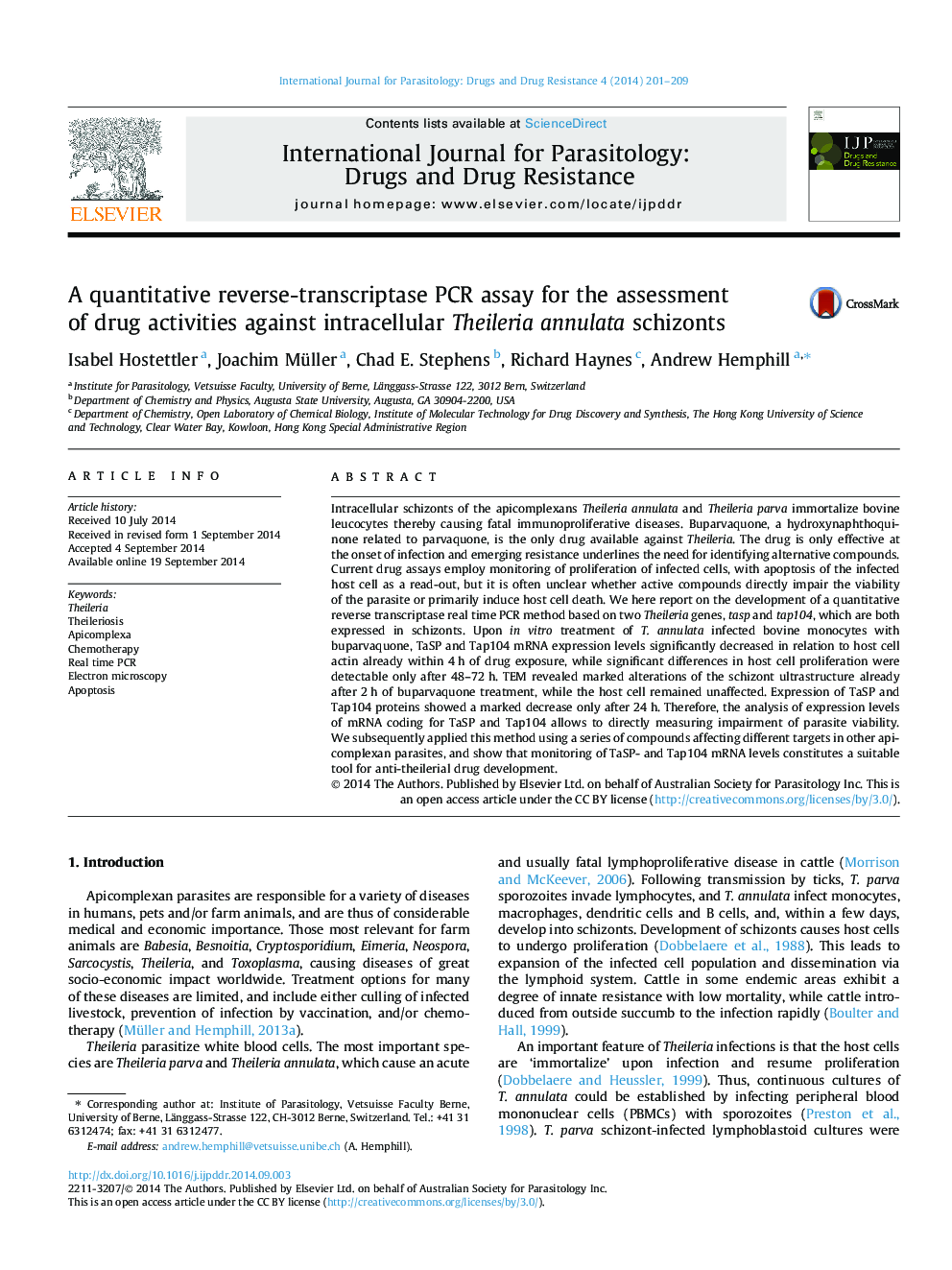| کد مقاله | کد نشریه | سال انتشار | مقاله انگلیسی | نسخه تمام متن |
|---|---|---|---|---|
| 2054638 | 1075677 | 2014 | 9 صفحه PDF | دانلود رایگان |

• Quantitative RT real time PCR was used to assess metabolic impairment of Theileria schizonts.
• The method was validated with buparvaquone.
• Buparvaquone acts directly and rapidly on the parasite within 1 h of treatment.
• Electron microscopy confirmed these findings.
• A series of anti-parasitic compounds and antibiotics acted primarily on the host cells.
Intracellular schizonts of the apicomplexans Theileria annulata and Theileria parva immortalize bovine leucocytes thereby causing fatal immunoproliferative diseases. Buparvaquone, a hydroxynaphthoquinone related to parvaquone, is the only drug available against Theileria. The drug is only effective at the onset of infection and emerging resistance underlines the need for identifying alternative compounds. Current drug assays employ monitoring of proliferation of infected cells, with apoptosis of the infected host cell as a read-out, but it is often unclear whether active compounds directly impair the viability of the parasite or primarily induce host cell death. We here report on the development of a quantitative reverse transcriptase real time PCR method based on two Theileria genes, tasp and tap104, which are both expressed in schizonts. Upon in vitro treatment of T. annulata infected bovine monocytes with buparvaquone, TaSP and Tap104 mRNA expression levels significantly decreased in relation to host cell actin already within 4 h of drug exposure, while significant differences in host cell proliferation were detectable only after 48–72 h. TEM revealed marked alterations of the schizont ultrastructure already after 2 h of buparvaquone treatment, while the host cell remained unaffected. Expression of TaSP and Tap104 proteins showed a marked decrease only after 24 h. Therefore, the analysis of expression levels of mRNA coding for TaSP and Tap104 allows to directly measuring impairment of parasite viability. We subsequently applied this method using a series of compounds affecting different targets in other apicomplexan parasites, and show that monitoring of TaSP- and Tap104 mRNA levels constitutes a suitable tool for anti-theilerial drug development.
Figure optionsDownload as PowerPoint slide
Journal: International Journal for Parasitology: Drugs and Drug Resistance - Volume 4, Issue 3, December 2014, Pages 201–209